The Flag in the Civil War
Share Photos and StoriesThe attack on Fort Sumter, South Carolina in April 1861 launched the nation into civil war and brought about lasting changes in how Americans viewed and used the Star-Spangled Banner. Through Key’s song, an earlier generation had come to appreciate the flag’s value as an inspiring and unifying national symbol. The Civil War not only revived that patriotic attachment to the flag, but expanded and intensified it, fostering a spirit of reverence and devotion that would endure for generations to come. Entwined with a war to redefine the United States and what it should stand for, the flag became the primary icon of national identity and ideals, infused with meanings and memories from all sides of the conflict.
For Northerners who were called on to defend the Union created by the founding fathers, the flag became the sacred emblem of that cause, consecrated in battle by the blood of Union soldiers. With the abolition of slavery and the opening of the Union ranks to black soldiers, many African Americans saw the flag in a new light, as a symbol of freedom and the promise of citizenship. For members of the Southern Confederacy, meanwhile, the “old flag” they had once loved had come to stand for a federal government that did not respect their rights and threatened their way of life.
The artifacts and images on this page reflect how the Civil War transformed the American flag into a sacred symbol worth defending and dying for—on the battlefield and beyond. The ultimate defeat of the Confederacy ensured that the Union, and its flag, would survive. Yet in the struggle to transform the American flag into a symbol of freedom and equality for all, the Civil War was only the first of many battles yet to come.
Flag Rules and Rituals-
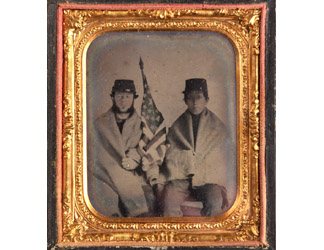
Ambrotype portrait
Wrapped in camp blankets with the flag nestled between them as if it were an old comrade, these Union soldiers evoked the loyalty and affection many Civil War veterans expressed for the national emblem.
-
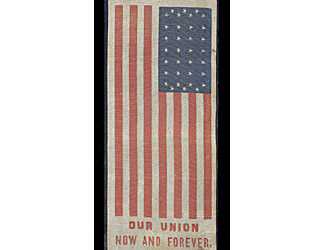
Lincoln campaign ribbon
A moderate Republican, Abraham Lincoln opposed the expansion of slavery into the territories, but, in hopes of preserving the Union, he pledged to uphold the Constitution’s protection of slavery in the states.
-

Stars and Stripes quilt
On the home front, many women supported the war effort by making flags and domestic items for the troops. Mary Rockhold Teter of Noblesville, Indiana, made this patriotic bed quilt for her soldier son using a pattern published in Peterson’s Magazine in July 1861.
-
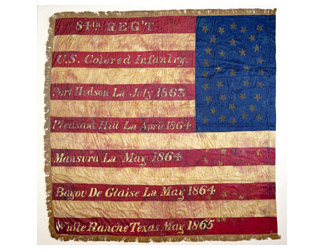
United States Colored Troops flag
Civil War battle flags became revered relics that bore witness to the courage and sacrifice of the soldiers who defended them. The Eighty-fourth Colored Infantry served in the Gulf of Mexico region until March 1866.
-
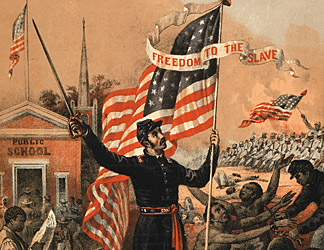
Union Recruitment Handbill
Recruitment handbill for African American troops, about 1863.
-
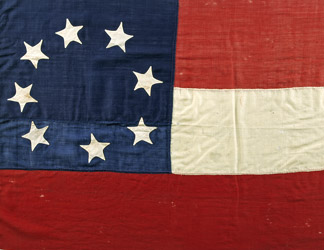
Confederate Stars and Bars
The first Confederate national flag, known as the “Stars and Bars,” often proved indistinguishable from the Stars and Stripes in the thick of battle. The battle flag, created in 1861, became the icon of the Confederacy.
-
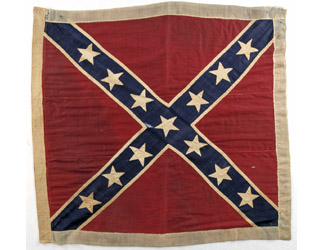
Confederate Battle Flag
The first Confederate national flag, known as the “Stars and Bars,” often proved indistinguishable from the Stars and Stripes in the thick of battle. The battle flag, created in 1861, became the icon of the Confederacy.
-
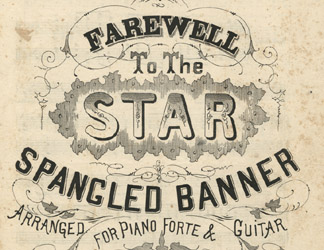
Confederate sheet music
Published in Richmond, Virginia, around 1861.
-
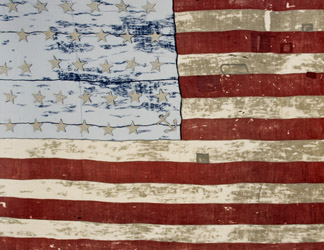
The original “Old Glory”
This flag was hoisted over the state capitol after Union forces recaptured Nashville, Tennessee 1862. The widely told story of the flag—which had been sewn inside a bed ticking to hide it from the Confederates—popularized “Old Glory” as a name for all American flags.








